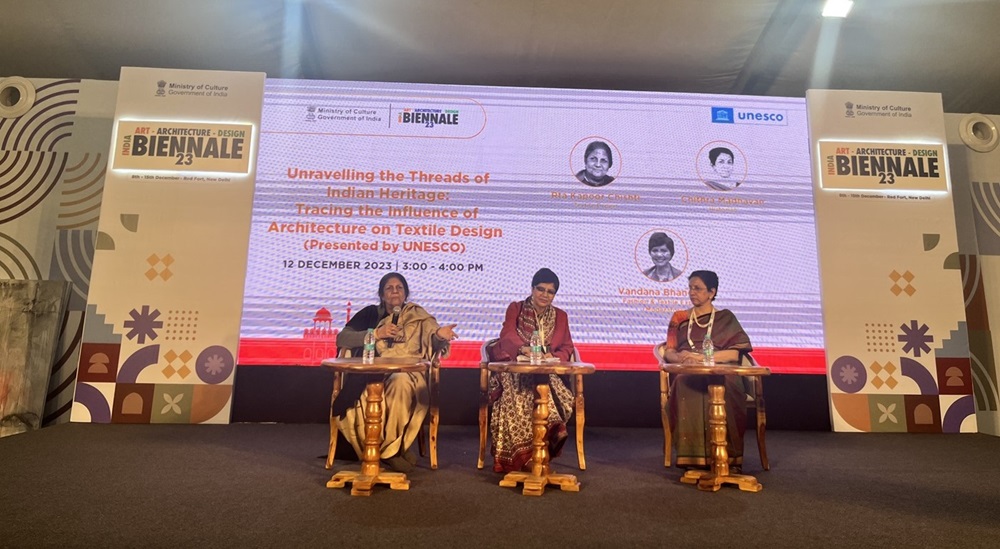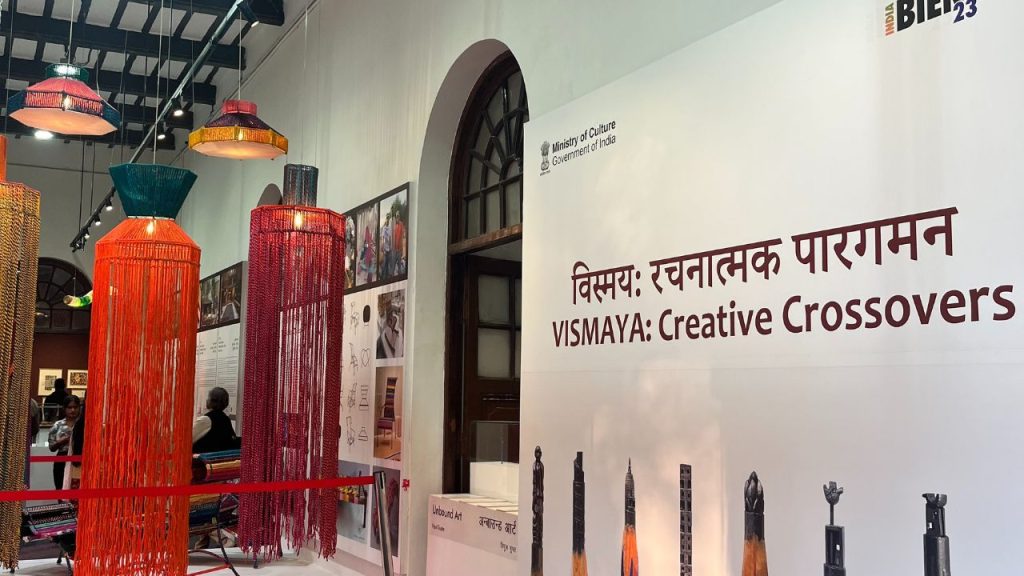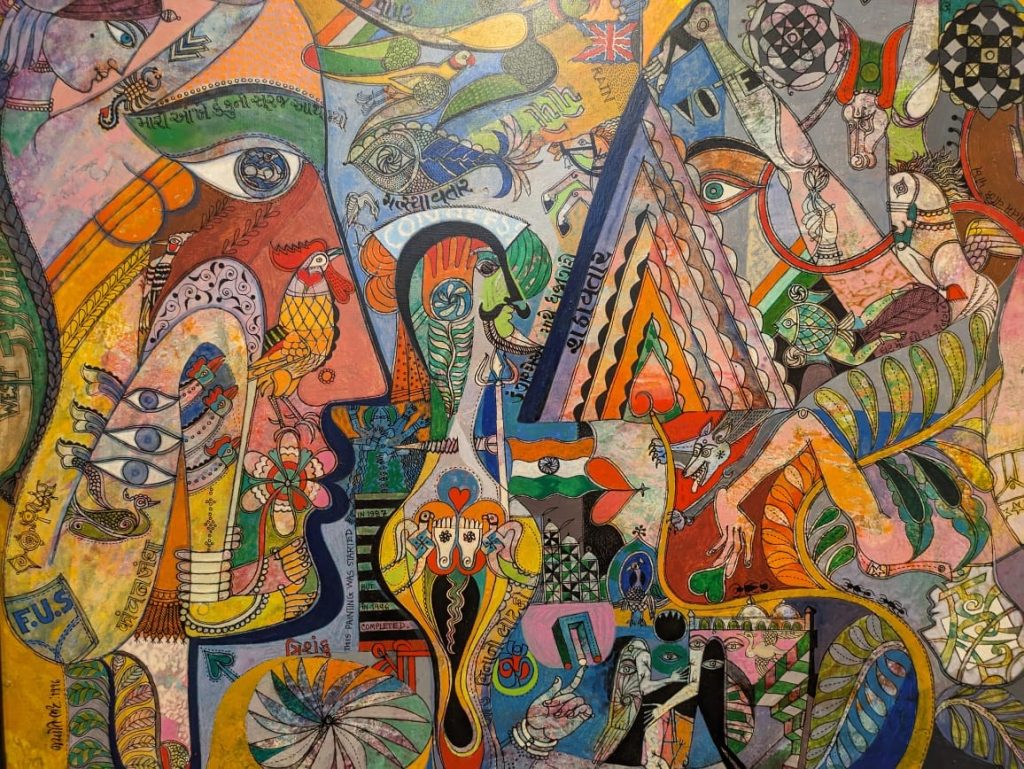In a quite riveting exhibit of artworks ranging across seven themes, art bazaars, workshops and thought-provoking panel discussions, the ‘India Art, Architecture and Design Biennale’, a first of its kind, indulged its audience with the works of over 90 artists from across the country. The first edition of the biennale opened its doors to the public on the 9th of December, 2023. It was inaugurated a day before, on the 8th of December at the Red Fort, Delhi, by the Prime Minister who said that art, literature and music add flavour to human life and make it unique and worth living. He further stated that a culture that values discussion and debate inherently encourages diversity and accepts and values all kinds of diversity.
Thus far, the country has witnessed two biennales: the Bihar Museum Biennale, which began in Patna in 2021, and the Kochi-Muziris Biennale, which is conducted in Kerala since 2012. With the IAADB in the nation’s capital, the Central government is now demonstrating the country’s cultural might as it enters the international biennale scene.
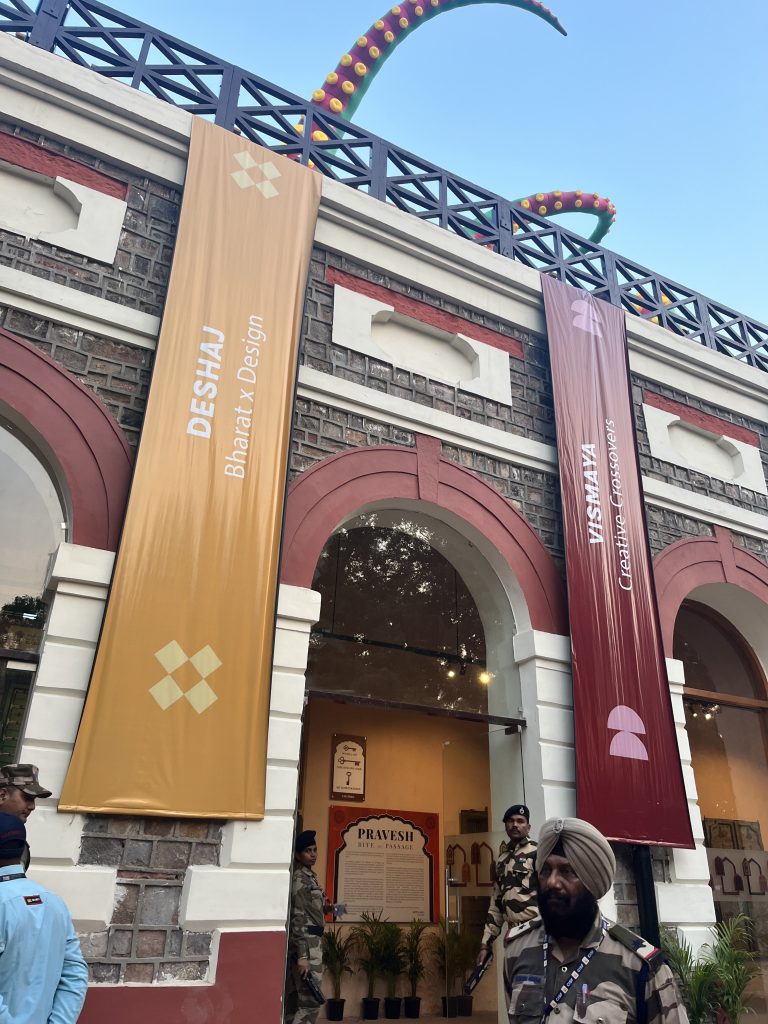
Divided across seven themes, namely, Pravesh (Indian Doors), Bagh-e-Bahar (Indian Gardens), Sampravah (Indian Balolis or Step-wells), Vismaya (Indian Architectural Icons of Independent India), Deshaj (Indian Design), and Samatva (Women in Architecture and Design). Each day will be devoted to a different theme, accompanied by a coffee table publication.
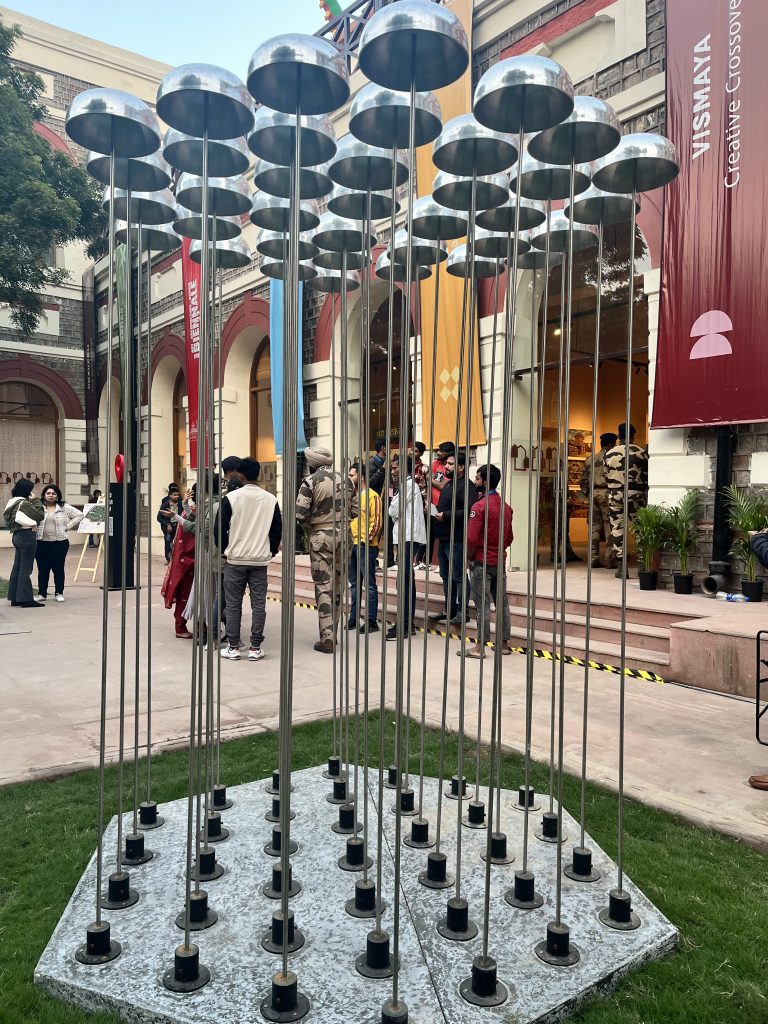
Just before entering the pavilion showcasing the majestic and variety of doors ranging from ancient to modern, we are greeted with an installation, Jhankar, by Shri Nataraj Dasgupta and his team from the National Council of Science Museums, Kolkata. The description of the artwork itself explains what the biennale is trying to do, “The combination of the visual swaying, the auditory tones, and the actual vibrations creates an auricular impactful experience. The stoic still rods sway back and forth to impart sensorial life in an inanimate world”. It creates a holistic experience for the viewer who is forced to use all their senses and faculties, thus creating a lasting impression.
India’s rich tradition of art and architecture, ranging from elaborate doors to majestic ancient temples, and from historic stepwells to vibrant textile designs, are being exhibited at the iconic heritage site. There is a parallel student biennale, exhibiting a wide range of artworks by students, being hosted by the Lalit Kala Akademi which will also be on display till the 31st of March, 2024.
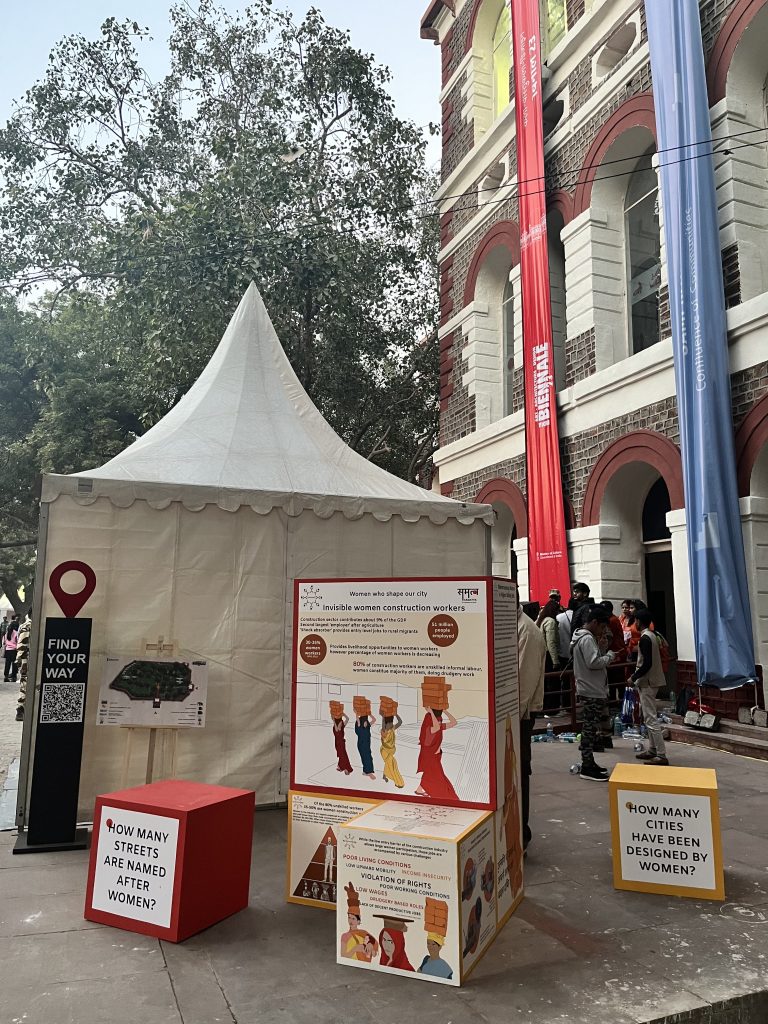
The biennale also follows important recent events like the Festival of Libraries held in August and the International Museum Expo held in May. In order to enhance the cultural discourse, it is intended to start a comprehensive debate between the general public, collectors, architects, designers, photographers, and other art professionals. As part of the changing economy, it will also offer channels and chances to grow and work with artists, architects, and designers. The first panel discussion was kicked off by Chinki Sinha, journalist, moderating the session ‘Perspectives Ajar’ with the discussants, Swapna Liddle, author and historian; Rima Hooja, historian and archaeologist; and Smriti Saraswat, seasoned architect. Important questions surrounding history and perspectives had been raised and tackled by the speakers. The following session ‘The Geometry of Design’, presented by the Iran Cultural House was quite an engaging panel discussion between the renowned architects, Dr. Mahdi Arj, Monsour Boroujerdi Heydar and Mohammad Kashanian.
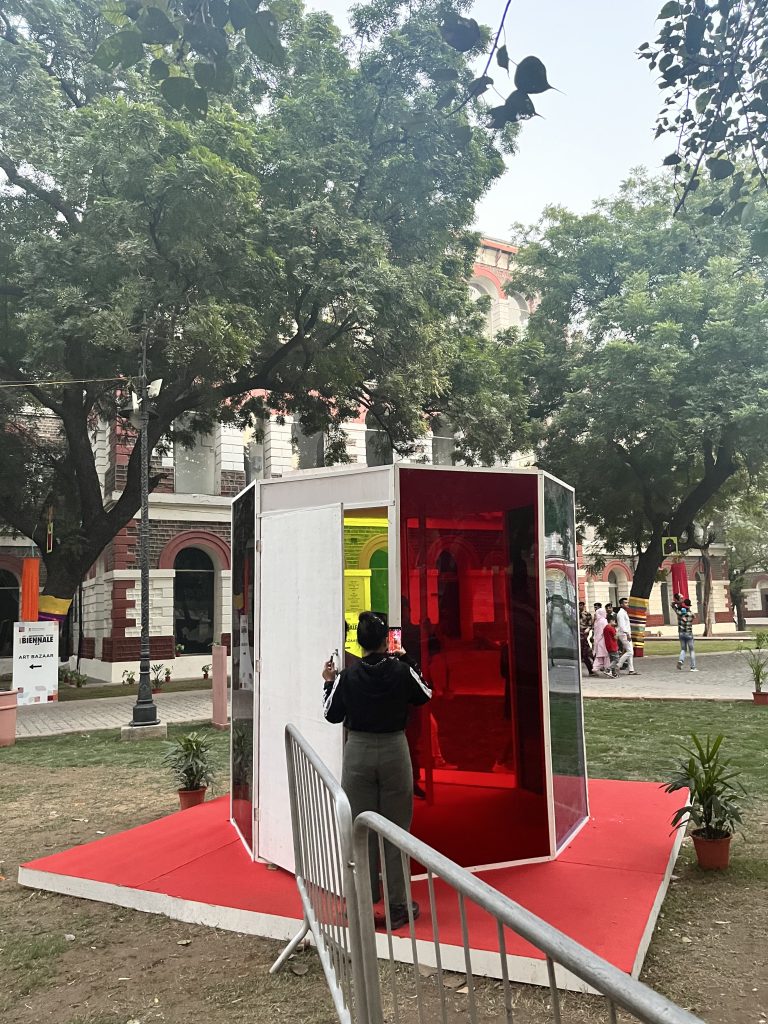
SaTaRa is a captivating installation comprising three monumental cheriyal masks, each representing one of three rasas of emotions: Sattvik, Tamsik, and Rajsik. The concept behind this installation is to throw light on humanity’s innate essence and encourage people to comprehend and embrace their core values and morals.
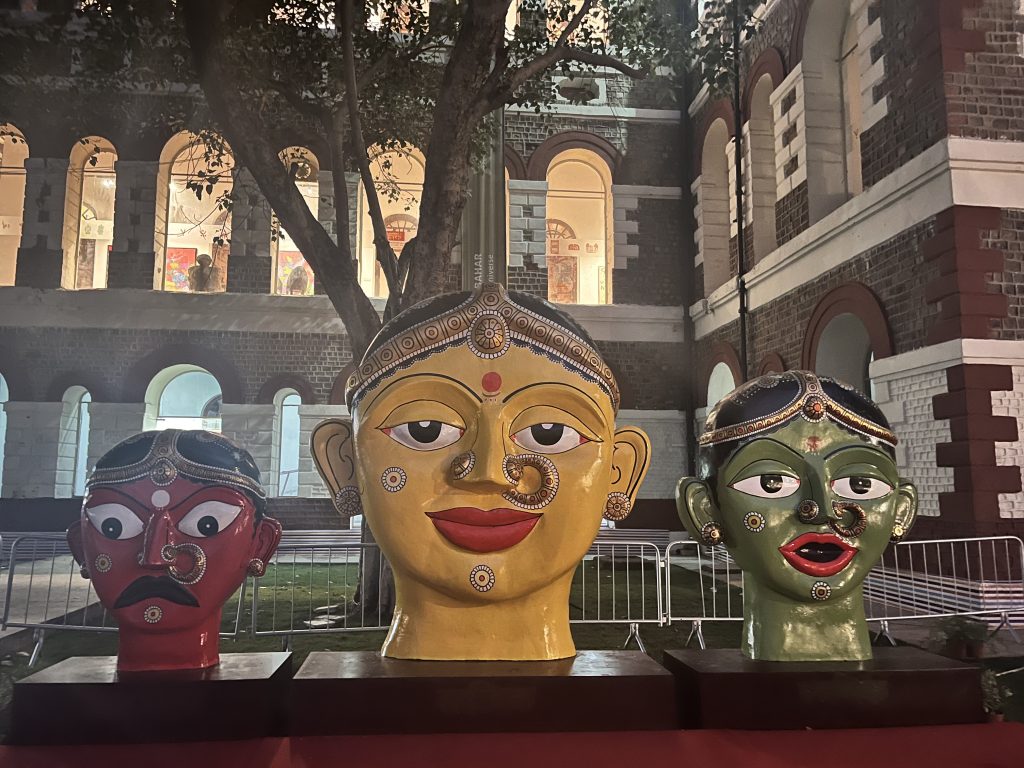
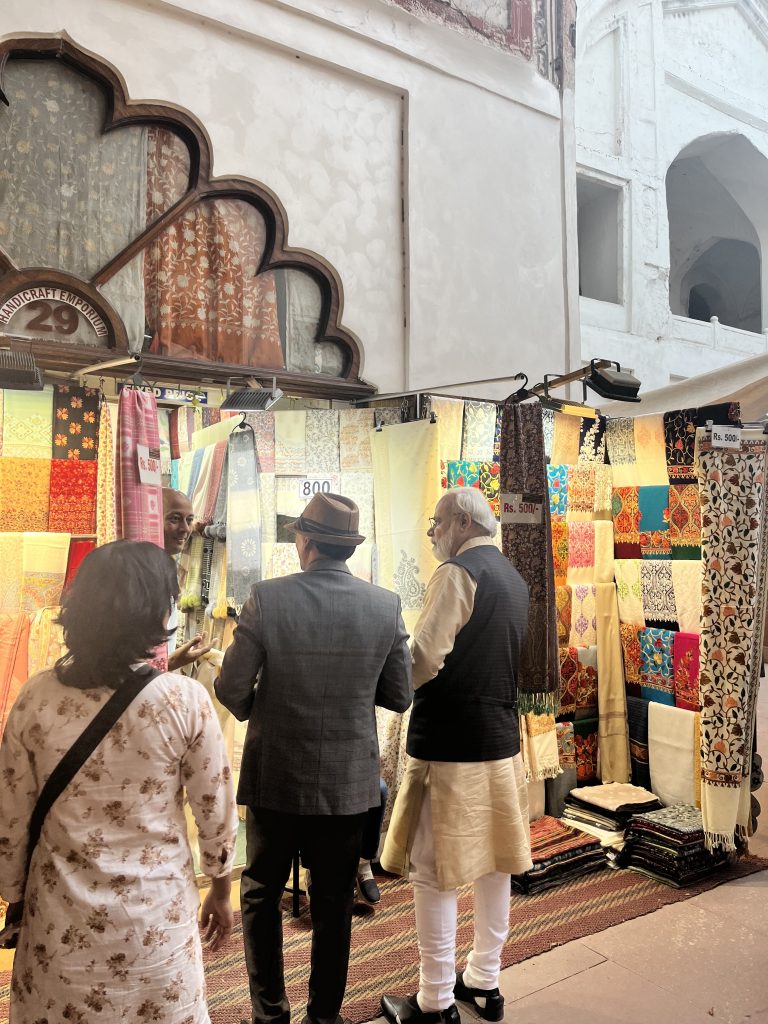
Another sight to watch out for, not really a part of the biennale, is the Prime minister look alike who travels with his assistant cum manager and is seen taking rounds of the exhibition, roaming around the Red Fort and eagerly clicking pictures with spectators.
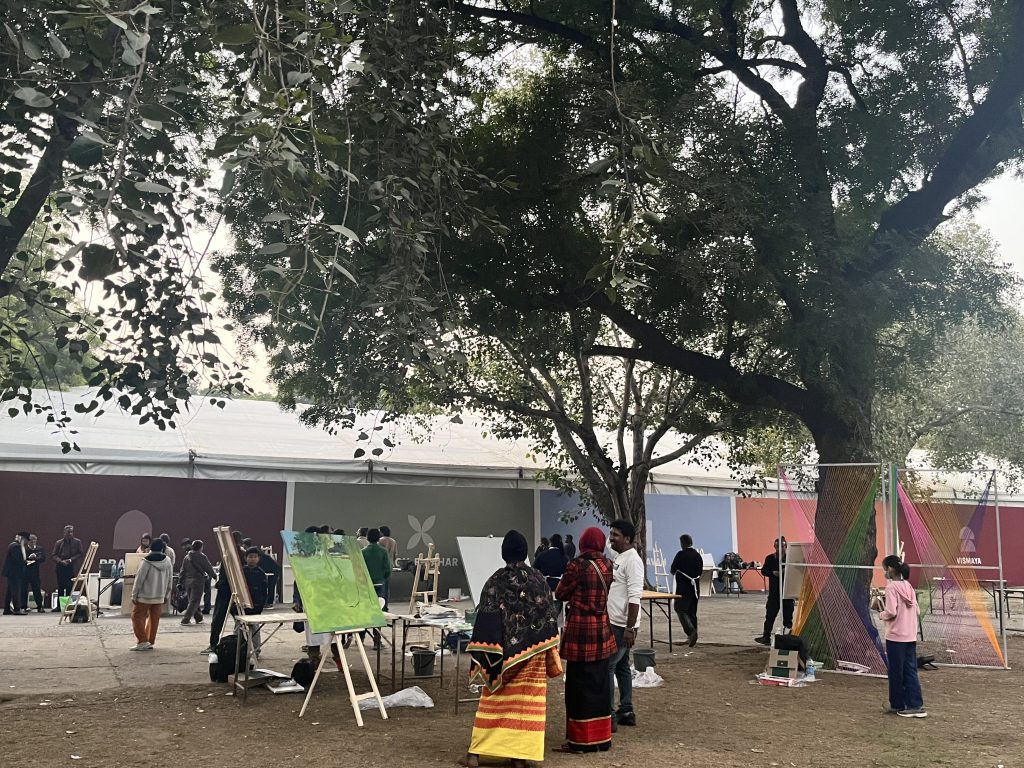
According to the ministry of culture, the biennale aims to create a global cultural event similar to those in Venice, São Paulo, Berlin, and Dubai. It is inspired by the Prime minister’s decision to develop five cultural sites in India, including one at the historic Red Fort.
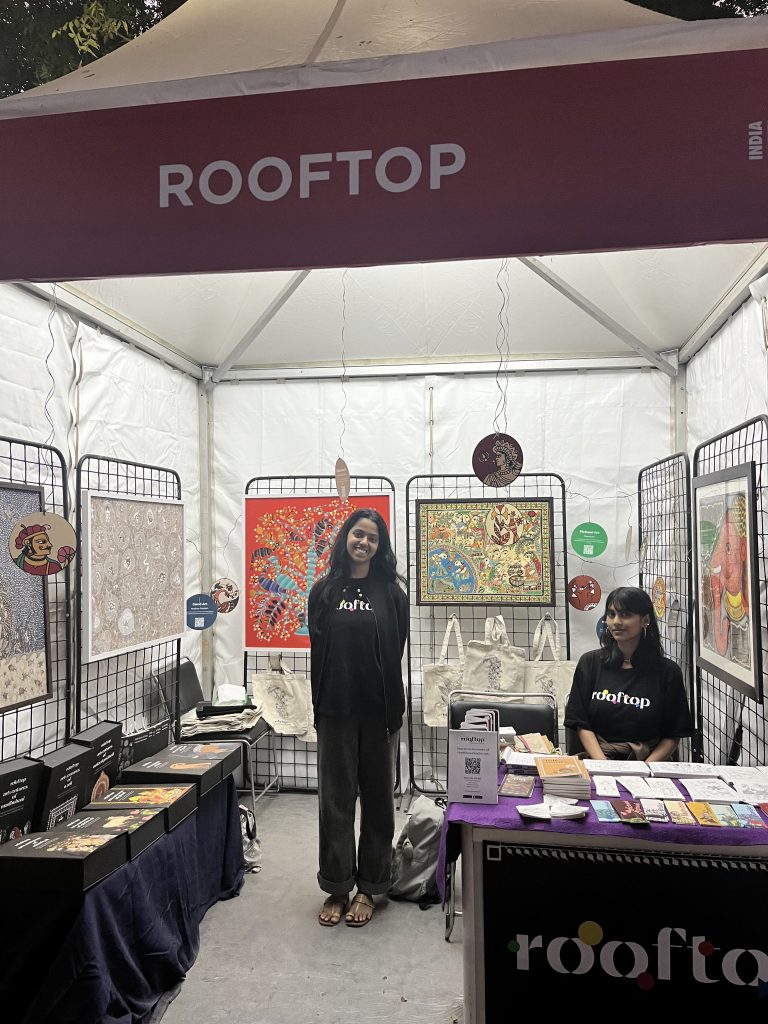
Apart from the workshops, a part of the biennale that seems to be attracting too many spectators and customers is the lively and buzzing art market. One such store is Rooftop. They offer a myriad range of workshops, courses, and also have a great collection of postcards and bookmarks, which actually educate people on the various folk art forms that exist in our country but are more often than not, overshadowed.
Organised in collaboration with the National Council of Science Museums, the Archaeological Survey of India, the Lalit Kala Akademi, the Council of Architecture, and the Ministry of Education’s outreach division, the National Gallery of Modern Art is curating the biennale. The biennale provides an in-depth exploration of India’s rich tapestry of art, architecture, and design, encompassing everything from its historic stepwells and doorways to its contemporary constructions. In addition to including a plethora of well-known international artists, architects, and designers, the cultural extravaganza also features exhibitions, seminars, art installations, workshops, and an art bazaar. Furthermore, the public can view the pavilions built and erected as part of the biennale till March 31, 2024.
Feature Image: SaTaRa, art installation | Courtesy: Abir Pothi
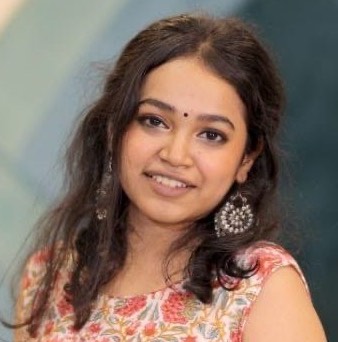
Anoushkha Prasad is a post-graduate from the School of Arts and Aesthetics, J.N.U. She is currently working as a researcher and writer.


